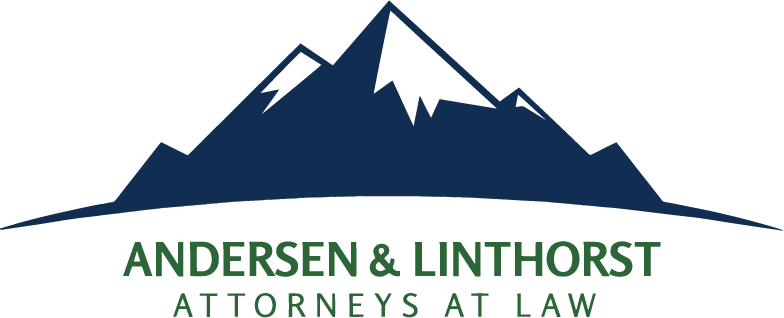ANDERSEN’S DOZEN
Here are 12 of the books that Medford attorney Kelly Andersen recommends to trial attorneys, especially those specializing in plaintiff’s personal injury cases. This post is made in conjunction with an article published in the Oregon State Bar’s Bulletin.
“Now What Makes Juries Listen,” by Sonya Hamlin
Hamlin, a thought leader in communication for 25 years, here distills her best tips. Beautifully written and carefully edited, this book is a treasure for anyone trying any type of case, civil or criminal, plaintiff or defense. It has a slight institutional bias to the prosecution in criminal cases and to the defense in civil cases. The book is filled with penetrating communication treasures.
“McElhaney’s Trial Notebook,” by James McElhaney
Writing with vigor and spunk, McElhaney offers in each chapter the Wisdom of Solomon. When he retired, someone asked McElhaney where his ideas came from, since he had never been an trial lawyer. He replied that it all came “from the noggin.” He captivates his readers by placing each chapter in the setting of some fictitious attorneys or law professors analyzing what went right or wrong in each trial situation. The book has been through numerous editions, each improving on the last.
“The Art of Public Speaking,” by Dale Carnegie
Written in 1910, this book continues to be republished because its principles of excellent communication are as valid today as they were a hundred years ago. Carnegie identifies the most common mistake most speakers make (trying to cover too much material), the most common oversight (not speaking from personal experience), and the most common sin (not knowing when to stop). He illustrates what makes a speech sparkle with life.
“Words That Work,” by Frank I. Luntz
Luntz, a political wonk who coined a number of words that have shaped our national political discourse, reveals how just a few carefully selected words can make all the difference in the outcome of a debate. What I have learned from the book is to embed a half dozen or so meticulously chosen key words or phrases into a trial. If done right, the whole trial will begin to revolve around those words.
“In Search of Excellence: Lessons from America’s Best-Run Companies,” by Thomas J. Peters and Robert H. Waterman Jr.
I read this book in the early 80s, soon after it had become an international bestseller. Though some of the companies identified in the book have since fallen from glory, the principles Peters and Waterman identify are still as true today as they were four decades ago. Two of the principles I have repeatedly applied are “stick to the knitting” (find a core competency and constantly improve within that area rather than diversifying too much and losing our edge) and always be reliable (Frito Lay consistently delivered fresh chips when its competitors did not).
“The Effective Executive,” by Peter F. Drucker
If there is one book that will increase any attorney’s effective use of time, this is that book. The mantra that Drucker repeats again and again is: “feed the opportunities and starve the problems.” This book is worth reading multiple times.
“Seven Habits of Highly Effective People,” by Stephen R. Covey
Now translated into 70 languages, this book continues to guide organizations large and small in developing those universal habits of all successful people and businesses. Covey talks of the “P/PC balance” (the balance between “production” and “production capacity”) and the “four quadrants,” and he shows how we unwittingly slip into doing what is urgent at the expenses of what is important.
“How to Win Friends and Influence People,” by Dale Carnegie
First published in 1936, this book has sold more than 15 million copies and continues to be a bestseller. It changed my life in high school and continues to teach me today. I have re-read it multiple times. Invoking story after story after story as examples, Carnegie teaches the well-springs of human motivation and behavior.
“Resonate,” by Nancy Duarte
Duarte designed Microsoft’s PowerPoint background slides and has prepared visuals for Fortune 500 companies. When Bono gave his famous TED talk on hope in fighting poverty, it was Duarte who prepared his slide deck. She discovered that every great speech contains a contrast between what is and what could be. She admonishes “murder your darlings,” meaning to get rid of those elements of your speech (or your case) that don’t contribute – no matter how hard you have worked on them and no matter how much you love them.
“Presentation Zen” and “Presentation Zen Design,” both by Garr Reynolds
In these companion books, Reynolds identifies from the Zen arts what makes for effective presentation and design (simplicity and restraint). No one can read his work, and that of Duarte, without flinching – even cringing – at the almost constant misuse of PowerPoint in most CLE presentations, even by national speakers who ought to know better.
“Made to Stick: Why Some Ideas Survive and Others Die,” by Chip & Dan Heath
This is a must read for any attorney. The Heath brothers come up with a simple formula to make any written or spoken concept “stick.” To stick, the idea must be presented as a Simple, Unexpected, Concrete, Credible, Emotional, Story (SUCCESs).
“The Autobiography of Benjamin Franklin,” by Benjamin Franklin
No one’s education can be complete without having read this delightful autobiography, which Franklin finished near the end of his life. From his perspective of the long view of life, he is able to instruct any person in business how to succeed by diligence, good habits, frugality and discipline.
For more recommendations from Kelly, check out his follow up post at https://andersenlaw.com/good-books-worth-reading/.

